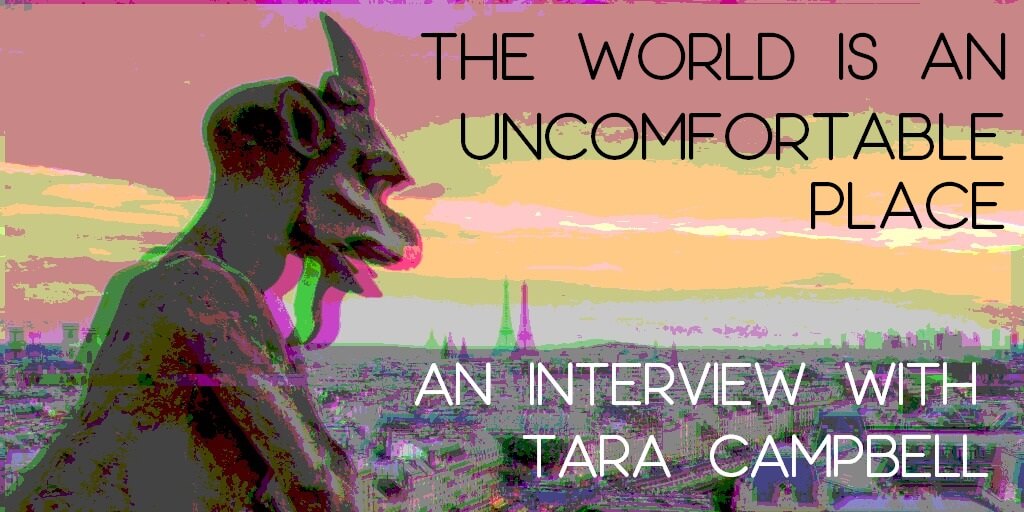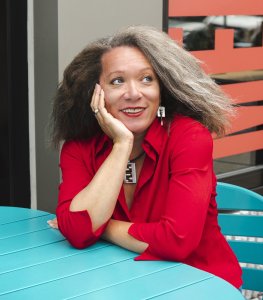
Tara Campbell’s award-winning writing often engages with the disquieting aspects of life, whether real or imagined. She invites readers to recognize and deeply consider their world—and perhaps begin to view it through a refocused lens. Her publication credits include The Masters Review, Wigleaf, Electric Literature, CRAFT Literary, Daily Science Fiction, Strange Horizons, and Escape Pod/Artemis Rising. She’s the author of a novel, two hybrid collections of poetry and prose, and two short story collections from feminist sci-fi publisher Aqueduct Press. Her sixth book, City of Dancing Gargoyles, a novel featuring sentient gargoyles in the 22nd century American West, is forthcoming from SFWP in fall 2024.
Tara is a Kimbilio Fellow, fiction co-editor at Barrelhouse, and a graduate of American University’s MFA in Creative Writing. She teaches creative writing at venues such as American University, Johns Hopkins University, Clarion West, The Writer’s Center, Hugo House, and the National Gallery of Art.
Her story, “Midge,” published in X-R-A-Y in 2020, offers an insightful introduction to her work. Featuring the broken parts of discarded dolls stuck in a junk drawer, the story examines often-hidden aspects of our society through the eyes of a grumpy, armless doll who is focused on escaping her fate.
I met Tara several years ago at an author’s conference, and even though I was a bit star-struck, she quickly put me at ease with her warmth and humor. I appreciate this opportunity to explore her unique style.
Myna Chang: First, let’s talk about your books. Novels, hybrid collections of poetry and prose, short story collections—you’ve done it all. And you cover such a wide expanse of topics, in a variety of styles. What fuels these different approaches to your storytelling? Do you find yourself revisiting themes or subject matter?
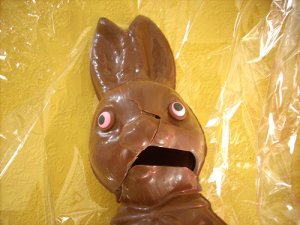 Tara Campbell: I find that different feelings lead to different forms. What got me interested in speculative fiction was the wonder behind its central question of “what if?” There’s the classic “what if” about sentient life on other planets, but I also wonder about less obvious things like what if we could communicate with trees, what if a spleen showed up at my front door, what if chocolates grew eyes and looked at you before you ate them? I’m a pantser, not a plotter, and the sense of exploration in speculative fiction definitely taps into that impulse.
Tara Campbell: I find that different feelings lead to different forms. What got me interested in speculative fiction was the wonder behind its central question of “what if?” There’s the classic “what if” about sentient life on other planets, but I also wonder about less obvious things like what if we could communicate with trees, what if a spleen showed up at my front door, what if chocolates grew eyes and looked at you before you ate them? I’m a pantser, not a plotter, and the sense of exploration in speculative fiction definitely taps into that impulse.
On the other hand, I find myself writing poetry when I’m pissed off—and there’s no shortage of stuff to be pissed off about. I like to stay informed, but at some point I have to let the bile out before it corrodes me, and that’s when I turn to poetry—hence, I write a lot of political poetry. Now, just because I write it, doesn’t mean it has to see the light of day. Writing and publishing are two different things. What’s important is for me to get the poison out before it consumes me.
My editor for my upcoming book told me he noted a theme of fairness in my work, which wasn’t at the forefront of my mind, but makes a lot of sense. What riles me up is when things aren’t fair: sexism, racism, any of the isms. Speculative fiction is a great space in which to examine the roots of unfairness in our current systems, as well as to engage in a little wish fulfillment about how those systems might change.
MC: I’m often struck by the way your stories embrace discomfort. “The Spleen” is a great example of this. When this polite little organ knocks on the door and begins speaking, we might have a moment of unease simply because we’re faced with a disembodied human organ. As the story progresses, a different, more personal discomfort is revealed. How does this edge of disquiet serve your writing goals?
TC: Contrary to what we might wish, the world is an uncomfortable place. Bodies are uncomfortable. Relationships and emotions can be uncomfortable. Most economic and political systems operate with the acceptance that a certain number of people will be uncomfortable. We spend a good deal of our lives working to cover up the discomfort, but writing provides an opportunity to confront and often embrace it.
I rarely set out to be dark or squirmy—things just kind of turn that way when I strip things down to the essential questions of who wants what from whom and why. Allowing work to skew dark lets us examine human (and inhuman) motivations in a controlled manner. As much as we like to deny it, humans are animals, and that edge of discomfort between being animals and wanting to be something “better” is a fascinating edge to ride.
MC: Your “In the City” short stories have been honored with multiple awards, including a slot in the 2022 Wigleaf Top 50 with “In the City of Screaming Ropes.” These stories are engaging and wildly unexpected, often with a thread of social commentary laced through the narrative. How did this series come about? And how did you sustain it for 20+ separate stories?
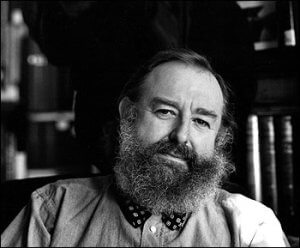 TC: The “In the City of” series began as a prompt I gave myself based on a novel pre-writing technique by Michael Moorcock based on “deliberate paradoxes”:
TC: The “In the City of” series began as a prompt I gave myself based on a novel pre-writing technique by Michael Moorcock based on “deliberate paradoxes”:
“Prepare a list of images that are purely fantastic, deliberate paradoxes say, that fit within the sort of thing you’re writing. The City of Screaming Statues, things like that. You just write a list of them so you’ve got them there when you need them. Again, they have to cohere, have the right resonances, one with the other.”
I was instantly fascinated by the image of a city full of screaming statues. What do they sound like? Why are they screaming? WHAT are they screaming? Do they always scream, or only at a certain time of day, or with a specific trigger? Where is this place, and how do people live there?
And why do they stay?
Because I wasn’t thinking about writing a novel, I broke the pre-writing exercise down even further, focusing on unexpected combinations at a sentence level using the structure “In the city of [verb]ing [noun]s.”
I typed out a list of things that fascinate me: gargoyles, trees, devils, wolves, butterflies, knives, flowers, banshees, windchimes, etc.
Then I typed a list of evocative actions: drinking, gurgling, swordfighting, floating, crying, feasting, bleeding, warring, etc.
Each morning, I drew one noun and one verb at random, then wrote to figure out how they fit together. It was a relief to focus on solving one riddle a day, without having to worry about how it fit in with the day before or the day after. I just kept doing it until I had over three dozen paradoxes saved on my computer. Some of them allowed themselves to be shaped into publishable stories.
MC: Your sixth book, City of Dancing Gargoyles, will be released by SFWP in fall 2024. Featuring sentient gargoyles, the novel is set in the 22nd century American West. I was lucky to read an early draft of the manuscript, and I fell in love with your setting and characters. Can you share how the story came to you?
TC: As with most of my writing, it was very much not planned—either as a novel, or focused on gargoyles, or set in the American West. I was just thinking of shopping out my “In the City of” stories as a collection until one of my writing friends, Raima Larter, suggested that the element of alchemical testing from one of my stories could link all of them.
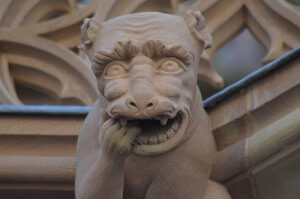 At the time, I was working on the story about digging gargoyles, and it wasn’t leading anywhere in particular. They were digging in sandy soil, looking for moisture after their church had dried up and crumbled and dropped them to the ground. But I didn’t know what to do with them from that point on, so I just left them there digging and eating beetles. Once I began thinking about a novel, I went back to them and just let them keep on talking. Then they made a decision to change their situation, and they became the main characters of the whole novel.
At the time, I was working on the story about digging gargoyles, and it wasn’t leading anywhere in particular. They were digging in sandy soil, looking for moisture after their church had dried up and crumbled and dropped them to the ground. But I didn’t know what to do with them from that point on, so I just left them there digging and eating beetles. Once I began thinking about a novel, I went back to them and just let them keep on talking. Then they made a decision to change their situation, and they became the main characters of the whole novel.
Some of the “City Of” stories became setting, others became plot points or reportage, and it all took place in a future American West reeling from the dual whammies of climate change and secret alchemical testing. I had fun overlaying my imagined cities onto a map of the West—I still have the routes of various characters superimposed on my current journeys.
MC: One of the things that has always struck me about your writing is your economical precision. You capture a full range of emotion with neat, clean prose that never wanders, never over-sells. In your story “In the Tearoom,” pinpoint details ground the reader, immersing them in this unexpected drama, this blossoming of tension. Your CRAFT Author’s Note explains how this story got its start. Here, I hope you can elaborate on how you hone your words to such a concise polish. Is this a triumph of editing? Years of practice? Please tell us you had to work hard to achieve this, that it didn’t just occur magically in your first draft.
TC: I’ve always been the kind of reader who speeds through descriptions of setting and characters to get to the action. Who is doing what with/for/to whom and why? That’s what interests me, so that’s what I focus on in my writing, which is what, I think, leads to my economical prose. Writing flash fiction has definitely honed my ability to cut through the fat to get to clean, clear prose.
Maybe it also comes of growing up in Alaska. Buildings and clothing were mostly utilitarian, focused on function without a lot of frippery, and to be honest, the people were generally the same. That said, being clear is not the same as being artless. Economy of words doesn’t translate to a paucity of vision—it’s a distillation.
MC: Let’s shift to your satire and social commentary. “Do You Have the Right to Justice?” uses a clever form to bring the reader in, revealing new layers with each step. And the pieces in your collection “Political AF: A Rage Collection” also utilize interesting forms. Can you elaborate on the variety of form and approach, and how those elements reinforce your central message?
TC: I think this gets back to the fairness issue. Sometimes systems are so blatant in their unfairness it’s almost comical, and that extremity requires even more implausible forms of expression. In “Vessels of the State“ I just had to imagine women giving endless birth to our own oppression, because that’s what conservative extremists seem to want. So I had us growing “as many vaginas as Kali has arms” and giving birth to Bibles and frying pans, capturing my anger at the misogyny and human rights abuses inherent in forced childbirth. When theocrats get the reins, bad things happen.
MC: I’ve been blown away by a few recent examples of your hybrid poetry, including “Night of the Butterflies: A Broken Sestina.” The form and subject matter feel distinctly different from the pieces in your collection. How did this evolve?
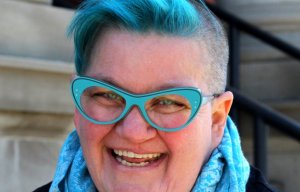 TC: This sestina is part of another “escape from writers block” series of prompts I gave myself. I became obsessed with sestinas after a class with Sage Tyrtle, who used this poetic form as an engine for prose. What I love about the form is it nudges you forward, telling you where you’re supposed to land, line after line. You can freestyle your way there, but you have a structure within which to work. Because I’m a pantser, it was kind of unusual to work with anchors like that, and the difference in form brought about a difference in tone. But it was refreshing, and taught me a lesson about resonance and productive repetition.
TC: This sestina is part of another “escape from writers block” series of prompts I gave myself. I became obsessed with sestinas after a class with Sage Tyrtle, who used this poetic form as an engine for prose. What I love about the form is it nudges you forward, telling you where you’re supposed to land, line after line. You can freestyle your way there, but you have a structure within which to work. Because I’m a pantser, it was kind of unusual to work with anchors like that, and the difference in form brought about a difference in tone. But it was refreshing, and taught me a lesson about resonance and productive repetition.
MC: Your teaching style is always warm and full of fun, even when talking about creepy horror. What drew you to teaching, and how do you keep it fresh?
TC: Teaching was a byproduct of my excitement about what I was reading. When I find myself getting discouraged by my own writing blocks, prepping for class or dreaming up new offerings is a solace, renewing my enthusiasm about storytelling. I tend not to teach what I call “disembodied craft,” meaning classes organized around craft principles, utilizing little snippets of various stories or novels. That can make it seem like if you don’t know the terminology, you’re not really a writer. My approach tends to be more about applied craft, looking at a story to see how someone was able to lure us down a fantastical or horrendous path almost without our noticing—regardless of what the technique is called. When I’m completely transported by a story, I just have to go back and find all the breadcrumbs that got me to this new place. Getting to share those discoveries with other writers is a gift.
MC: You’ve recently moved to the other side of the universe (or at least it feels that way to your friends back in DC). I imagine it might be intimidating to be starting over in a brand new community. What are you looking for in your new home?
TC: I was definitely apprehensive about moving away from my artistic communities in DC, but it’s been fun discovering new opportunities to connect to writers in Seattle. Fortunately I began teaching classes online for Hugo House and Clarion West before I got here, so I had a bit of a toehold. Online tools have also softened the landing by enabling me to keep in touch with my people back in DC. It’s going to be a while before I feel like Seattle is “mine,” the way I felt about DC, but I’ve been exploring writing groups and bookstores close by, and I’m looking forward to future readings and conversations.
MC: I didn’t realize until recently that you’re also a visual artist, as well as a musician. Have these arts always been part of your life? How do you fit it all in?
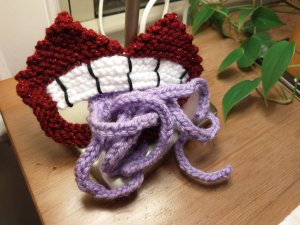 TC: I’d describe myself as a serial creative. I’m not doing all those things at once, but they all make me who I am, and have allowed me to meet a wide range of people. My family was always musical, so there were a bunch of instruments in the house and all us kids played something in school and beyond (for me it was trumpet, trombone, and cello). Mom taught us all to knit—yes, even the boys—and from an early age I loved to read and write and draw.
TC: I’d describe myself as a serial creative. I’m not doing all those things at once, but they all make me who I am, and have allowed me to meet a wide range of people. My family was always musical, so there were a bunch of instruments in the house and all us kids played something in school and beyond (for me it was trumpet, trombone, and cello). Mom taught us all to knit—yes, even the boys—and from an early age I loved to read and write and draw.
Working on creative projects was just something we did, especially during those long, dark Alaskan winters. I still find it therapeutic to take my mind off the main issues hammering away for attention and focus on creating something. You get to be productive, make something interesting, and clear your mind. Knitting certainly helped me through the pandemic.
MC: I admire the way your work pushes boundaries, taking bits and pieces from different forms and combining subject matter in surprising ways. Have you faced much pushback from editors or readers?
TC: I’ve been fortunate in terms of finding my people, those who can get behind different forms and topics. It takes some sleuthing, but I’ve found that there’s a market for just about any type of experiment you want to engage in. The trick is to know which beta readers are going to “get” your intentions, and which ones are going to try to nudge it into a direction they’re more familiar with. But like I said, I’ve been lucky to find folks—both beta readers and potential publishers—who are able to focus more on what a piece is trying to be than on how it deviates from their own expectations.
MC: What are you excited about now?
TC: Two things:
1. Exploring Seattle. It’s not only gorgeous (granted, I’m saying this during the summer), but also a city rich in writers and appreciative of literature. I’m looking forward to burrowing into my own little niche of it.
2. My book! City of Dancing Gargoyles is coming out from SFWP in 2024, and we’re working on the cover as we speak. I’m in the calm before the marketing storm, which will now be a bicoastal thing. Stay tuned for preorders!
Read Myna Chang’s “Restoration” and Tara Campbell’s “Midge,” narrated by the Barbie of the same name.

